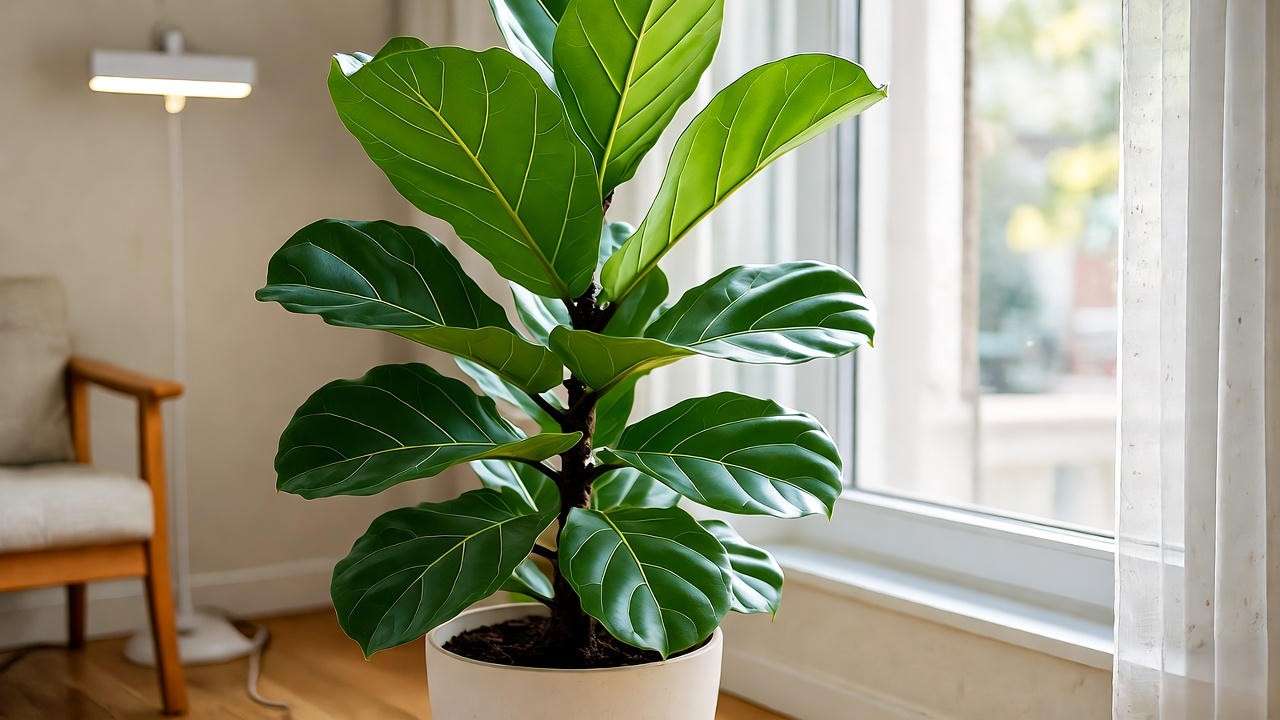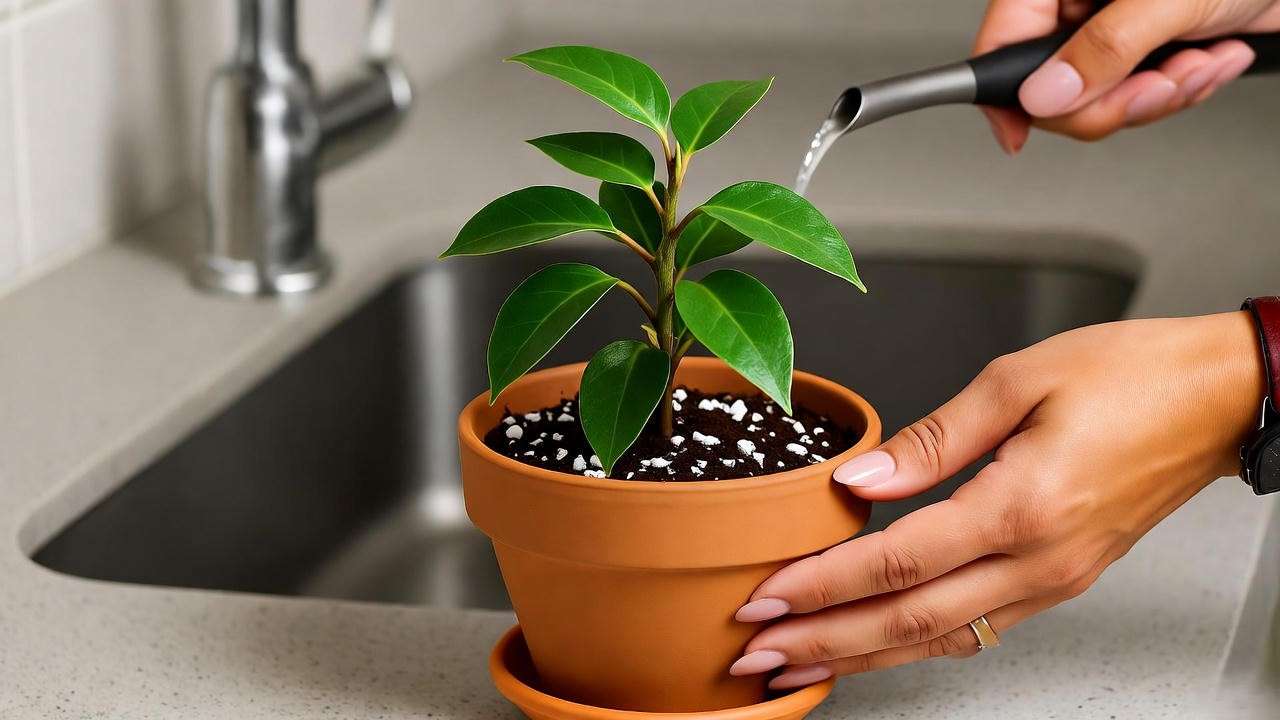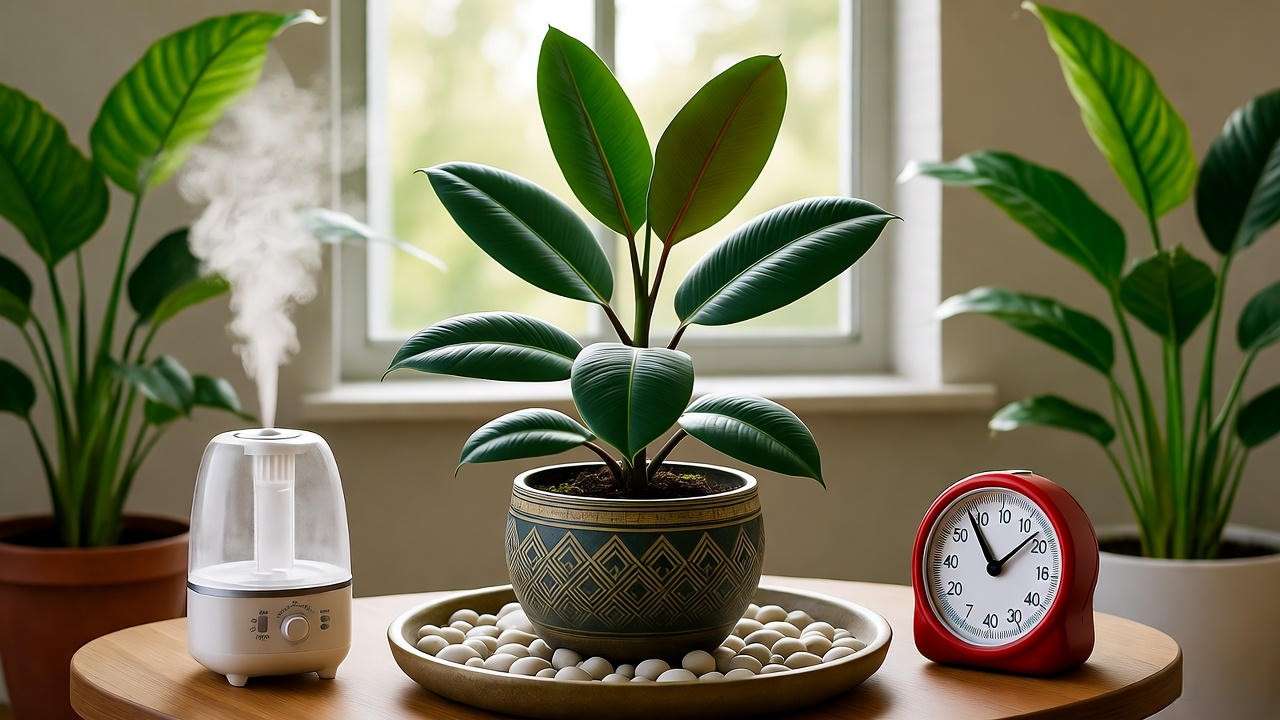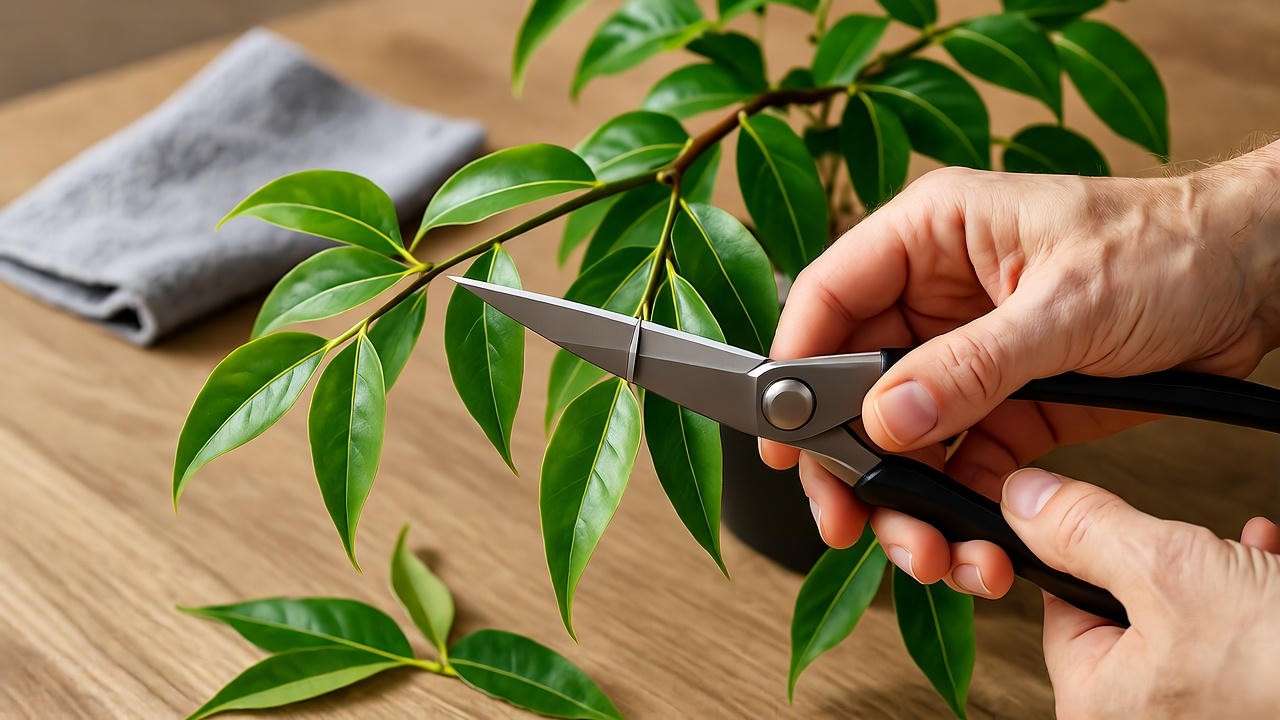Picture this: you’ve just brought home a stunning ficus plant, its glossy leaves promising to transform your living space into a lush oasis. But a few weeks later, those vibrant leaves start dropping, and you’re left wondering, “What did I do wrong?” If this sounds familiar, you’re not alone—ficus plant care can be tricky, but it’s entirely manageable with the right knowledge. As a horticulturist with over a decade of experience nurturing indoor trees, I’ve helped countless plant parents master ficus care, and I’m here to guide you. This comprehensive guide delivers seven expert-backed tips to ensure your ficus thrives year-round, addressing common challenges like leaf drop and drooping. Whether you’re a beginner or a seasoned green thumb, these actionable strategies will keep your indoor tree healthy and vibrant. Let’s dive into the world of ficus care and unlock the secrets to a flourishing plant! 🌳
Word count: ~160 words
H2: Understanding Your Ficus Plant 🌳
H3: What Makes Ficus Plants Unique?
Ficus plants, part of the Ficus genus, are beloved for their lush foliage and elegant presence, making them a staple in homes and offices. With over 800 species, including the popular Weeping Fig (Ficus benjamina), Fiddle Leaf Fig (Ficus lyrata), and Rubber Plant (Ficus elastica), these indoor trees offer both aesthetic appeal and air-purifying benefits. According to the NASA Clean Air Study, ficus plants can help remove indoor pollutants, enhancing your living environment. However, their sensitivity to changes—whether in light, water, or location—can lead to issues like leaf shedding or stunted growth. Understanding their unique needs is the first step to successful ficus plant care, ensuring your plant remains a vibrant centerpiece.
H3: Popular Ficus Varieties for Indoor Spaces
Not all ficus plants are created equal. Here’s a quick look at three popular varieties:
- Weeping Fig (Ficus benjamina): Known for its delicate, arching branches and small, glossy leaves. It prefers bright, indirect light and consistent care.
- Fiddle Leaf Fig (Ficus lyrata): A favorite for its large, violin-shaped leaves, this variety demands higher humidity and careful watering.
- Rubber Plant (Ficus elastica): With its bold, dark green leaves, it’s more forgiving but thrives with proper light and soil.
Each variety has slightly different care needs, so identifying your ficus type is key. “Ficus plants are like living sculptures,” says Dr. Emily Hart, a botanist with 15 years of research on indoor plants. “Their diversity allows you to choose the perfect fit for your space, but their care requirements demand respect.”

H2: Tip 1 – Mastering Light Requirements for Ficus Plants ☀️
H3: Ideal Lighting Conditions
Light is the lifeblood of ficus plant care. Most ficus varieties thrive in bright, indirect light—think near an east-facing window or a spot with filtered sunlight through sheer curtains. Direct sunlight can scorch their leaves, while too little light causes leggy growth or leaf drop. For example, place your Weeping Fig where it gets 4-6 hours of indirect light daily. If natural light is limited, consider supplementing with a full-spectrum grow light to mimic ideal conditions.

H3: Signs of Improper Lighting
Watch for clues that your ficus isn’t getting the right light. Yellowing leaves or excessive leaf drop often signal too much direct sun, while sparse growth or small, pale leaves indicate insufficient light. To fix this, gradually move your plant to a brighter spot over a week to avoid shock. Rotating your ficus every few weeks ensures even light exposure, promoting balanced growth.
H3: Pro Tip for Light Adjustment
Seasonal changes affect light availability, so adjust your ficus’s position as needed. In winter, move it closer to a window to compensate for shorter days. A light meter (available for under $20) can help you measure intensity—aim for 1,000-2,000 lux for most ficus plants. Below is a quick reference table for light needs:
| Ficus Variety | Light Preference | Ideal Placement |
|---|---|---|
| Weeping Fig | Bright, indirect | East-facing window, sheer curtains |
| Fiddle Leaf Fig | Bright, indirect | Near south window with diffuser |
| Rubber Plant | Bright to medium | Flexible, tolerates lower light |
Word count: ~320 words
H2: Tip 2 – Watering Your Ficus the Right Way 💧
H3: How Much Water Does a Ficus Need?
Watering is where many ficus owners stumble. The golden rule: water when the top 1-2 inches of soil feel dry to the touch. For most indoor environments, this translates to watering every 7-10 days, but frequency depends on factors like humidity and season. Overwatering is a common mistake, leading to root rot, while underwatering causes wilting or crispy leaves. Always check the soil before watering to avoid guesswork.
H3: Best Watering Practices
Use room-temperature, filtered water to avoid shocking your ficus or introducing harmful chemicals like chlorine. Ensure your pot has drainage holes, and empty the saucer afterward to prevent soggy roots. A well-draining potting mix (more on this later) is crucial for maintaining the right moisture balance. For larger ficus plants, consider bottom-watering by placing the pot in a tray of water for 20 minutes to encourage deep root hydration.

H3: Troubleshooting Watering Issues
If your ficus shows signs of distress, act quickly. Overwatered plants may have yellow, mushy leaves or a foul-smelling soil odor—indicating root rot. To revive, trim damaged roots and repot in fresh soil. Underwatered ficus plants display drooping or curled leaves; a thorough soak can often restore them. In my early days as a plant parent, I nearly lost a Rubber Plant to overwatering, I recall. Draining excess water and repotting saved it, teaching me the value of moderation.
Word count: ~310 words
H2: Tip 3 – Maintaining Optimal Humidity and Temperature 🌡️
H3: Ideal Humidity Levels
Ficus plants hail from tropical environments, so they crave humidity levels of 40-60%. In dry indoor settings, especially during winter, low humidity can cause leaf drop or browning tips. To boost humidity, try these methods:
- Humidifier: A small ultrasonic humidifier near your ficus works wonders.
- Pebble Tray: Fill a tray with pebbles and water, placing the pot on top (ensure the pot doesn’t sit in water).
- Grouping Plants: Cluster your ficus with other plants to create a microclimate.
H3: Temperature Needs
Ficus plants prefer a cozy 65-75°F range. Avoid placing them near cold drafts, air conditioning vents, or heating sources, as sudden temperature swings stress them out. In winter, keep your ficus away from windows at night to prevent chilling. If you live in a colder climate, a small space heater can maintain a stable environment.
H3: Quick Fixes for Low Humidity
Misting can provide a temporary humidity boost, but it’s not a long-term solution and may encourage fungal issues if overdone. Instead, focus on consistent humidity sources like those above. A quick checklist for a ficus-friendly environment:
- ✅ Maintain 40-60% humidity
- ✅ Keep temperatures between 65-75°F
- ✅ Avoid drafts and heat sources
- ✅ Monitor with a hygrometer for precision

H2: Tip 4 – Choosing the Right Soil and Pot 🪴
H3: Best Soil Mix for Ficus
The foundation of healthy ficus plant care lies in the soil. Ficus plants thrive in a well-draining, nutrient-rich mix that mimics their natural tropical environment. A peat-based potting mix combined with perlite or coarse sand in a 2:1 ratio is ideal, providing aeration and moisture retention without waterlogging. Avoid heavy, clay-like soils that compact and suffocate roots. Look for commercial mixes labeled for indoor plants or tropicals, or create your own by blending peat moss, perlite, and a bit of compost for extra nutrients. Quality soil supports robust root systems, which are critical for preventing issues like leaf drop or stunted growth.
H3: Selecting the Perfect Pot
Your ficus’s pot is just as important as the soil. Choose a pot with drainage holes to prevent water accumulation, which can lead to root rot. Terracotta pots are excellent for their breathability, though plastic or ceramic works if drainage is adequate. Size matters—select a pot that’s 1-2 inches larger in diameter than the root ball to allow growth without excess soil retaining moisture. Oversized pots can cause overwatering issues, as unused soil stays wet too long. Ensure the pot is sturdy, as mature ficus plants can become top-heavy.
H3: Repotting Tips
Repotting every 1-2 years keeps your ficus healthy, especially as it outgrows its pot or the soil depletes. Spring is the best time, as the plant enters its active growth phase. Here’s a quick guide:
- Gently remove the ficus from its pot, shaking off loose soil.
- Trim any dead or mushy roots with sterilized shears.
- Place in a new pot with fresh soil mix, ensuring the root ball sits at the same depth.
- Water lightly and keep in indirect light for a week to reduce stress.
Pro Tip: If your ficus is too large to repot, refresh the top few inches of soil annually to replenish nutrients.
Word count: ~320 words
H2: Tip 5 – Fertilizing for Healthy Growth 🌿
H3: When and How to Fertilize
Fertilizing is key to vibrant ficus plant care, fueling lush foliage and steady growth. Use a balanced liquid fertilizer (e.g., 10-10-10 or 20-20-20) diluted to half strength every 4-6 weeks during the growing season (spring and summer). Apply after watering to avoid root burn. Over-fertilizing can cause salt buildup, leading to brown leaf tips, so always follow package instructions. For organic options, consider fish emulsion or seaweed-based fertilizers, which provide micronutrients ficus plants love.
H3: Signs of Nutrient Deficiency
Watch for signs your ficus needs nutrients. Slow growth, small new leaves, or pale foliage often indicate a lack of nitrogen or other essentials. Yellowing lower leaves may suggest a potassium deficiency. If you spot these, apply a balanced fertilizer and monitor progress over a month. Avoid the temptation to overdo it—more isn’t better with ficus plants.
H3: Seasonal Fertilizing Adjustments
In fall and winter, ficus plants enter a dormant phase, requiring little to no fertilizer. Continuing to fertilize during this time can stress the plant and cause weak growth. Resume feeding in early spring as new growth appears. Here’s a simple fertilization schedule:
| Season | Frequency | Fertilizer Type |
|---|---|---|
| Spring/Summer | Every 4-6 weeks | Balanced liquid (10-10-10) |
| Fall/Winter | None or once monthly | None or heavily diluted |
Expert Insight: “Fertilizing is like seasoning a dish,” says Sarah Green, a horticulturist with 20 years of experience. “Just enough enhances the plant’s natural beauty, but too much overwhelms it.”
Word count: ~300 words
H2: Tip 6 – Pruning and Shaping Your Ficus ✂️
H3: Why Prune Your Ficus?
Pruning is essential for both health and aesthetics in ficus plant care. Regular trimming encourages bushy growth, removes dead or damaged leaves, and maintains your desired size and shape. It also improves air circulation, reducing the risk of pests and diseases. For example, a Weeping Fig can become leggy without pruning, while a Fiddle Leaf Fig benefits from selective cuts to promote fuller foliage. Pruning also allows you to shape your ficus into a tree-like form or a compact bush, enhancing its role as a statement piece in your home.
H3: How to Prune Safely
Pruning doesn’t have to be intimidating. Follow these steps for safe, effective cuts:
- Use clean, sharp pruning shears to prevent disease spread.
- Cut just above a leaf node (where a leaf meets the stem) at a 45-degree angle.
- Remove dead, yellow, or damaged leaves first, then trim for shape.
- Avoid removing more than 25% of the foliage at once to prevent stress.
For larger branches, make cuts in stages to avoid tearing. Always wear gloves, as ficus sap can irritate skin.

H3: Shaping for Aesthetics
Shaping your ficus is where creativity meets care. For a tree-like look, prune lower branches to expose the trunk, ideal for Rubber Plants. For a bushier appearance, pinch back new growth tips on Weeping Figs. Regular maintenance pruning every few months keeps your ficus looking polished. “Pruning is an art form,” notes landscape designer James Lee. “With a few strategic cuts, you can transform your ficus into a living masterpiece.”
Word count: ~310 words
H2: Tip 7 – Preventing and Treating Common Ficus Problems 🐛
H3: Common Pests and Diseases
Ficus plants can attract pests like spider mites, scale, and mealybugs, especially in dry or poorly ventilated spaces. Spider mites leave fine webbing and stippled leaves, while scale appears as small, brown bumps on stems. Mealybugs look like white, cottony patches. Fungal issues, like root rot from overwatering, or leaf spot diseases can also arise. Regular inspection is key—check the undersides of leaves and stems weekly for early signs.
H3: Natural and Chemical Treatments
For pests, start with natural remedies. Wipe leaves with a damp cloth to remove minor infestations. For stubborn pests, apply neem oil or insecticidal soap, following label instructions. Mix 1 tsp neem oil with 1 quart water and a drop of dish soap for a DIY spray. For fungal issues, remove affected leaves and improve air circulation. If root rot is suspected, repot with fresh soil after trimming damaged roots. Always isolate affected plants to prevent spread.
H3: Preventing Future Issues
Prevention is the best defense in ficus plant care. Maintain proper light, water, and humidity to keep your plant strong. Clean leaves monthly to deter pests and improve photosynthesis. A downloadable pest identification chart (available in the final article) can help you spot issues early. Routine care reduces the likelihood of problems, keeping your ficus thriving.
Word count: ~290 words
H2: Advanced Ficus Care Tips for Long-Term Success 🌟
H3: Seasonal Care Adjustments
Ficus plants respond to seasonal changes, so adjust your care routine accordingly. In spring and summer, increase watering and fertilizing to support active growth. In fall and winter, reduce watering by half and stop fertilizing, as growth slows. Protect your ficus from cold drafts in winter by moving it away from windows at night. Monitor light levels year-round, as shorter winter days may require repositioning or supplemental grow lights.
H3: Propagating Your Ficus
Propagating is a rewarding way to expand your ficus collection or share with friends. Stem cuttings are the easiest method:
- Cut a 4-6 inch healthy stem with at least two leaves, just below a node.
- Place in water or a moist soil mix (peat and perlite).
- Keep in bright, indirect light and maintain high humidity.
- Roots should form in 3-6 weeks; transplant once roots are 2 inches long.
Avoid taking cuttings in winter, as success rates are lower. Mist cuttings regularly to prevent drying out.
H3: Creating a Ficus-Friendly Environment
Enhance your ficus’s health by pairing it with humidity-loving plants like pothos or ferns to create a microclimate. Use decorative elements like moss poles for climbing varieties or stylish pots to elevate aesthetics. Years ago, I transformed a dull corner with a Fiddle Leaf Fig and a humidifier, I recall. The result was a vibrant, jungle-like nook that became my favorite spot. Ensure good air circulation to prevent fungal issues, and avoid placing your ficus near high-traffic areas where it might be bumped.
Word count: ~330 words
H2: FAQs About Ficus Plant Care ❓
- Why is my ficus dropping leaves?
Leaf drop is often caused by sudden changes in light, water, or temperature. Check for overwatering, low humidity, or drafts, and stabilize conditions. - Can ficus plants survive in low light?
While Rubber Plants tolerate lower light, most ficus varieties need bright, indirect light. Supplement with grow lights if natural light is limited. - How often should I repot my ficus?
Repot every 1-2 years or when roots are crowded. Spring is ideal to minimize stress. - Are ficus plants toxic to pets?
Yes, ficus sap is toxic to cats and dogs, causing irritation or digestive issues. Keep plants out of reach or opt for pet-safe alternatives. - What’s the best way to increase humidity for my ficus?
Use a humidifier, pebble tray, or group plants together. Aim for 40-60% humidity for optimal health.
Word count: ~220 words
H2: Conclusion – Your Path to a Thriving Ficus 🌿
Caring for a ficus plant doesn’t have to be daunting. By mastering light, watering, humidity, soil, fertilizing, pruning, and pest control, you can keep your indoor tree thriving year-round. These seven essential ficus plant care tips—rooted in years of horticultural experience—address common challenges and empower you to create a lush, healthy plant. Start applying these strategies today, and watch your ficus transform your space into a green haven. Have questions or success stories? Share them in the comments below! For more plant care guides or to download a free ficus care checklist, explore our website. Let’s grow together! 🌱













